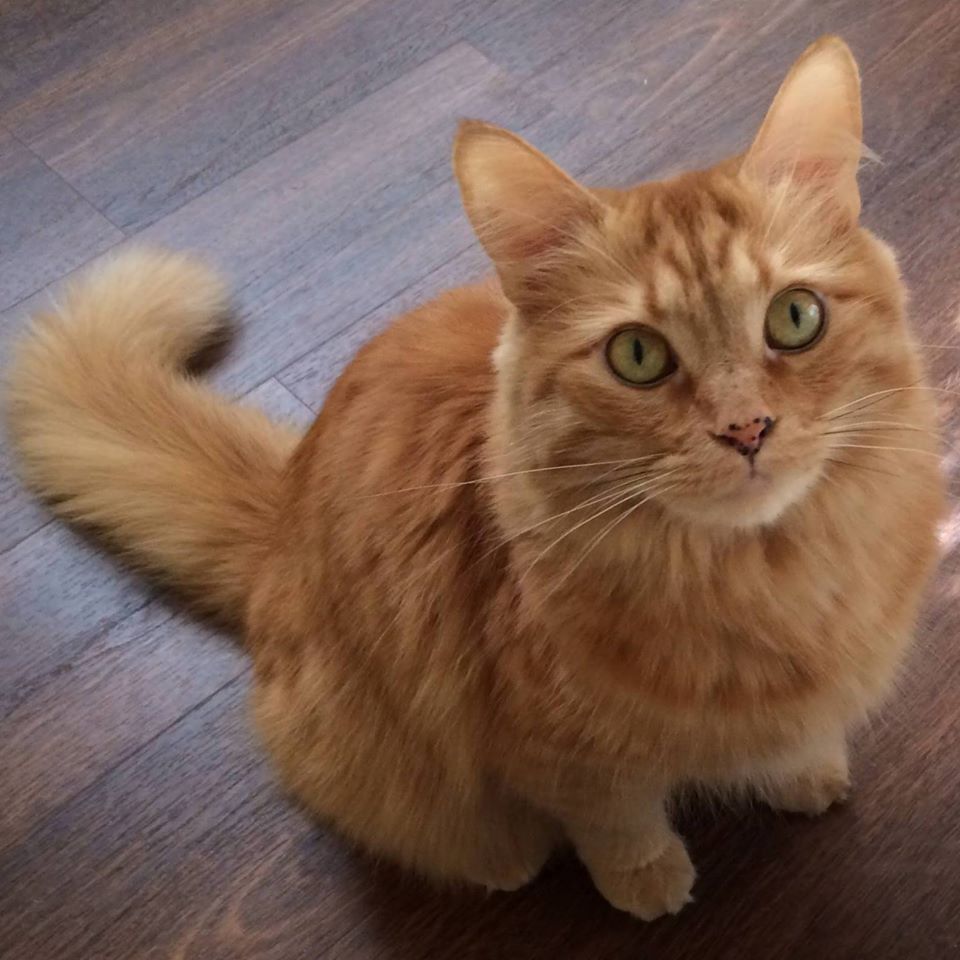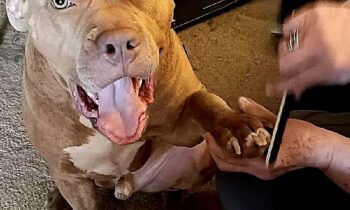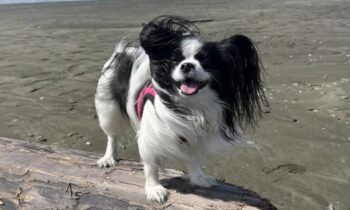
On social media, I read posts every day from pet owners who are uncomfortable with the pandemic protocols that veterinarians and vet clinics have practiced from the beginning of COVID-19. In many cases, it’s not just discomfort—it’s disapproval. Many clients cannot accept the big changes from how visits to the veterinary clinic used to be. It’s more difficult now to make an appointment, to communicate at the appointment, and to continue with treatment and follow-up for the pet.
I asked pet professionals and veterinarians to share their experiences and their thoughts.
Rebekah Hudson (Oregon) Well, the protocols aren’t ideal but are what has to happen right now to protect human life. I like one clinic in our area using Skype calls for exams so the veterinary team and owners can communicate during the exam and the owners can see what is going on. I have my vet clinic doing stuff like vaccines for my dog at our car. For full exams, I walk with them (socially distanced from the tech) to the clinic doors and then leave. It seems to help.
Aimee Gertsch (New Mexico) I am grateful we were allowed to go in, but only one of us. It was a regular-ish visit. We were actually lucky because our normal exotic vet had passed away, and a lot of vets weren’t taking new clients at the time (this was a year ago), but we found someone who could not only see us, but allowed one person in with the pet. Sadly, our Yuki (a hedgehog) passed away a week later, but I was very glad to be able to be in the room and not have to just drop her off curbside. Since I haven’t needed a vet visit in a year, I am not sure what the protocols are right now, but I can say that mostly our state is back to business as usual, so probably they are letting people in with their pets. They are finally letting people go in with patients in doctors’ offices, so I would think vet offices may have relaxed protocols, too.
Summer Storm Kingery DVM (North Carolina) As a vet using COVID protocols, I must say it has gone far better than I expected. In many ways, it has reduced some of the strain on patients because the team isn’t trying to look like ‘professionals,’ but rather are focused on what eases the patient. We’ve had some dogs who had required sedation not need it with their owners and strangers out of the building. It tends to be clients who are very distressed either in medical settings themselves or about their pet’s behavior. The pet feeds off them and becomes reactive, which worsens their distress, and a downward spiral starts. Often the biggest challenge is from a vehicle to the door. We’ve done more blood draws in laps than ever previously because there’s plenty of space. Having said all that, we simply can’t be as efficient. So we can’t see as many pets, which is hard for our clients. I should also mention that I go out to talk to clients. We also allow a client in when we need to review grave and complex information, end-of-life decisions, and to teach particular skills, such as feeding-tube use.

Photo by Kim Rinehardt
Jessica Theisen de Gonzalez (New York) I had to do the one thing I had hoped not to do, which was euthanize my geriatric cat. Having to hand her off and not be present when I knew she would have been comforted was devastating. We had been to the emergency room three times in four weeks with sinusitis, not knowing it was a rapid-moving brain tumor. It’s not the first move to run brain scans for a cat with a runny nose. This was thought to be a virus that would run its course after two different antibiotics were brought on board and failed. So the brain-tumor diagnosis knocked me back in surprise. I immediately decided the best option was to release her from suffering; she was in so much pain that my affectionate cat scarcely recognized me nor responded to my attempts to reassure her and say farewell. It felt as though she gave up, thinking I’d abandoned her and profoundly grieving my absence/abandonment. It traumatized me even more than a euthanasia normally would. There is no blame for anyone, but the guilt and grief cocktail I struggle with has been overwhelming at times.
Stephanie Presdee (United Kingdom) Consulted once in a car park for a callus on his hock that he had nibbled. Taking my dog away from me, the vet changed leads from my double clip to a slip lead I was not pleased about. I warned the vet [the dog] was strong as he was pulled into the surgery, and then we were able to observe him through a glass door wandering around a surgery off lead . . . heaven knows what he is capable of (flat coated retriever). Changed vets, and on recommendation of a friend who is a behaviorist, I used one that was nearer; she rang them and said I was a retired vet nurse. I was still seen on the pavement outside, with traffic and other dogs. I allowed [the dog] in unaccompanied for an FNA (swollen lymph gland). The lady vet commented he never stopped wagging his tail, but on being returned, he was determined to sniff a nearby post and I had to rescue her. The next time for a check, he stood at the back of his crate in the car boot on a Wait cue for the examination, and all was well.
Colette Kase (Mexico) In our part of Mexico, little has changed with respect to taking our pets to the vet. We simply wear masks, follow protocols of having our temperature taken and using hand (and shoe) disinfectant, and socially distance as best we can. I feel so sad for people I hear from in the U.S. and U.K. and the difficulties they are having accessing veterinary care.
Donna Furneaux (Ontario) I dropped Georgia off with the “she bites” warning. (She does if I’m not around.) Vet came out and sat at the curb before Georgia was brought out after her tooth job. Same thing at the tooth surgery checkup. Vet had the chance when I was not there to find out what was good for Georgia . . . apparently approaching her from the side to look at the teeth was best. Without me there, she could try different approaches. The curb chat was actually very pleasant and more relaxed than in the exam room.
Carol Duncan (Texas) My primary vet has started letting me go into the clinic with my dog. There was a while when it was curbside only, but she would come out to the car to discuss her recommendations after examining the dog. I felt very comfortable with this. However, I have one dog who has made regular visits over the past year to a specialist at a different hospital due to an immune-mediated disease. That facility is curbside only. I have never even met the vet who is treating him and just have brief conversations with her on the phone. It is uncomfortable waiting in the car in the Texas heat and I miss having the opportunity to visit in person with the vet.
Jennifer Grant (New Mexico) Here they take in the animal from the car. It is probably safest for staff. Fine with my current easy dog. Would have been a nightmare with my late anxious dog.
Ruth L. Heller DVM (Pennsylvania) From the vet side of it, we don’t like not having owners there for the most part. It’s hard to demonstrate things over the phone! Even with video. My hospital now lets one person into the waiting room, but not the exam rooms yet. So a bit better, but not back to normal. Usually the pets don’t seem bothered at all, and some are less stressed than if their owners are there. I have allowed owners in for euthanasia all along, even at the beginning. As far as owners go, while most are understanding and wonderful, we have been screamed at more these past two years than in the preceding twenty. We don’t like that it takes us longer either. We don’t like that we can’t see as many appointments, or that we are booked out weeks in advance. I had one woman walk out because she wasn’t allowed in the exam room and a half hour was not a long enough appointment for her liking (she had been told all of this when she scheduled and took up an appointment slot I could have used for another animal anyway). A man called my receptionist a barracuda because he was told he could not be in the exam room and he threatened to bad-mouth us all over the internet over it. We really need patience.
Julie Ellingson (California) I’ve had several vet visits. It was hard to hand over Patty when she was in pain and not have a face-to-face with our vet last year but, honestly, our vet is at high risk for a poor COVID outcome and that was before the vaccines. Poor Patty had a tumor that caused a catastrophic decline in her quality of life, and we let her go two weeks later. We were able to be there for her and for Willie, just a couple of months earlier. (He was 14 1/2 and it was his time.) I was grateful to be able to hold them when they passed. Some vets are okay with one owner present—I was able to go in when Jenny hurt her back. I’m sure many vets find it easier to examine their patients without the distraction of the owner, but I prefer to be able to see what they see and talk to them.
Flacortia Rosiea (Alberta) I go to a rural vet where the exam rooms are spacious enough for distancing. I was with my dog as she was euthanized and that was priceless.
Jenny Julian (Oregon) I’ve visited six different vet practices during the pandemic, with over 40 dogs in my rescue and of my own. Some practices definitely allow more time for communication than others. Depending on how busy the practice is, I find that writing down a list of issues to give them helps. Expressing appreciation for vet offices’ hard work during COVID is a must for me! It really helps to have a vet who will take the time to communicate well. If they are too busy to do this when it’s really needed—i.e., evaluating symptoms or explaining test results—that’s tough. At the same time, if folks who don’t need to talk can not take the vet’s time, it really helps everyone out. I think it’s especially important for vet practices not to make any surprise charges during pandemic vet visits. Fearful dogs that would do better with an owner or known person present is my biggest challenge with pandemic vet visits.
Most important during this time: be understanding, kind and polite. Everyone is stressed!



